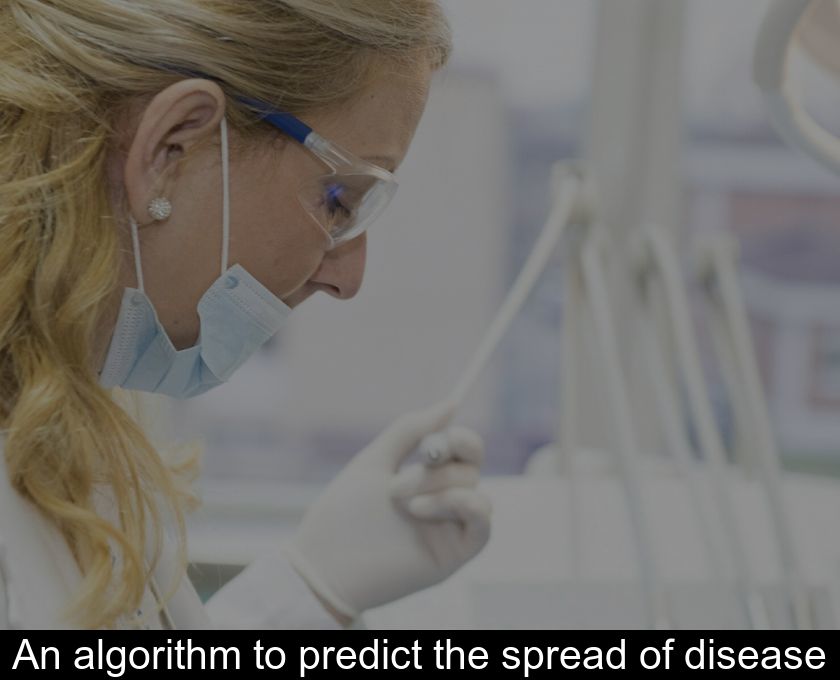An Algorithm To Predict The Spread Of Disease
The BlueDot algorithm scans news reports and aerial data to predict the spread of diseases such as the flu epidemic in China.
BlueDot for faster and more reliable information
On January 9, the World Health Organization notified the public of an influenza outbreak in China: a cluster of pneumonia cases had been reported in Wuhan, possibly from vendors' exposure to live animals at the Huanan Seafood Market.
The U.S. Centers for Disease Control and Prevention had Spread the word a few days earlier, on Jan. 6. But a Canadian health surveillance platform had beaten them both to the punch, sending word of the outbreak to its customers on Dec. 31.
BlueDot uses an AI-based algorithm that scours foreign-language news reports, animal and plant disease networks and official proclamations to give its customers advance warning to avoid dangerous areas like Wuhan.
Speed is important during an epidemic, and impetuous Chinese officials don't have a good track record of sharing information about disease, air pollution or natural disasters. But public health officials at the WHO and CDC have to rely on those same health officials for their own disease surveillance. So maybe an AI can get there faster. "We know you can't rely on governments to provide timely information," says Kamran Khan, BlueDot's founder and CEO. 'We can take news of possible outbreaks, little whispers or forums or blogs of hints of some sort of unusual events going on.'
Doctors and programmers to analyze and monitor diseases
Khan says the algorithm doesn't use social media posts because that data is too inaccurate and unreliable. But he has a trick up his sleeve: access to global airline ticketing data that can help predict where and when infected residents will head next. It correctly predicted that the virus would move from Wuhan to Bangkok, Seoul, Taipei and Tokyo within days of its initial appearance.
Khan, who worked as an infectious disease specialist at a hospital in Toronto during the 2003 SARS outbreak, dreamed of finding a better way to track diseases. That virus started in the province of China and Spread to Hong Kong and then to Toronto, where it killed 44 people. "There's a little bit of deja vu going on right now," Khan says of the coronavirus outbreak today. "In 2003, I saw the virus invade the city and cripple the hospital. There was tremendous physical and mental fatigue, and I thought, 'Let's not do this again.'"
After testing several predictive programs, Khan launched BlueDot in 2014 and raised $9.4 million in venture funding. The company now has 40 employees, physicians and programmers who design the disease-surveillance analytics program, which uses natural-language processing and machine-learning techniques to crawl news reports in 65 languages, as well as airline data and animal disease outbreak reports. "What we've done is use natural language processing and machine learning to train this engine to recognize whether it's an anthrax outbreak in Mongolia versus a meeting of the heavy metal band Anthrax," Kahn says.
Once the automatic data sorting is complete, human analysis takes over, Khan says. Epidemiologists verify that the findings make sense from a scientific perspective, and then a report is sent to governments, companies, and public health clients.
Using artificial intelligence to better prevent the risk of epidemics
BlueDot's reports are then sent to public health officials in a dozen countries (including the U.S. and Canada), airlines and front-line hospitals where infected patients might end up. BlueDot doesn't sell its data to the general public, but they are working on it, Khan says.
The firm isn't the first to seek a final solution from public health officials, but they hope to do better than Google Flu Trends, which was euthanized after underestimating the severity of the 2013 flu season by 140%.
BlueDot successfully predicted the location of the Zika outbreak in South Florida in a publication in the British medical journal The Lancet .
Whether BlueDot succeeds this time remains to be seen. But in the meantime, some public health experts say that despite covering up the SARS outbreak for months in 2002, Chinese authorities reacted more quickly this time.
"The outbreak is probably much larger than public health officials are reporting," says James Lawler, an infectious disease specialist at the University of Nebraska Medical Center who treated quarantined Ebola patients in 2017 and 2018. "Just using a back-of-the-envelope calculation on the number of travelers from China in a given week, and the percentage that could have been affected, that's a lot. '
An area containing eight cities and 35 million people has now been quarantined in China, the New york Times reported Friday , while the Wall Street Journal reports that hospitals in the Wuhan epicenter are turning away patients and medical supplies such as masks and disinfectants are running out.
Lawler and others say the coronavirus outbreak will continue to spread as travelers from China to other countries show symptoms of infection. He says we still don't know how many people will get sick and how many will die before the outbreak recedes.
To stop the spread of the disease, public health officials will have to tell the truth and tell it fast. But in the meantime, it might be worth supplementing an AI-driven epidemiologist.













